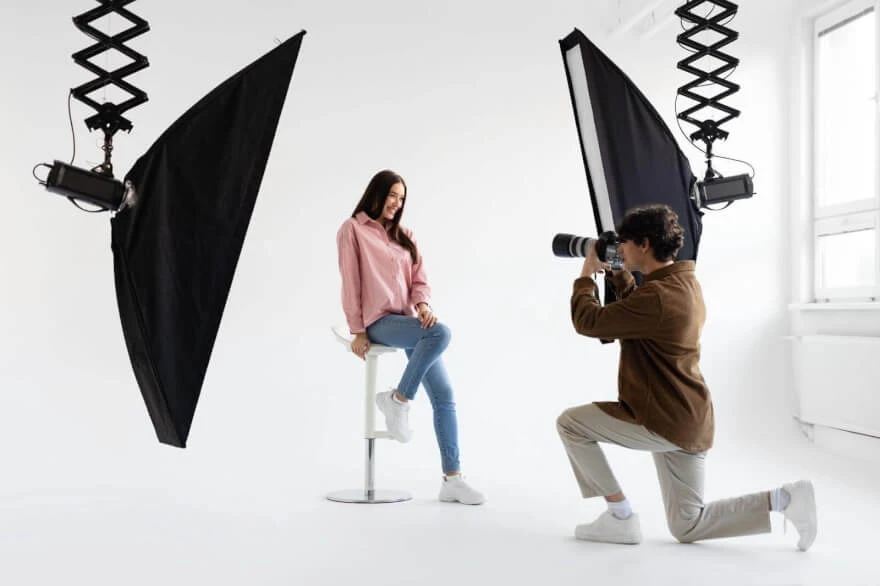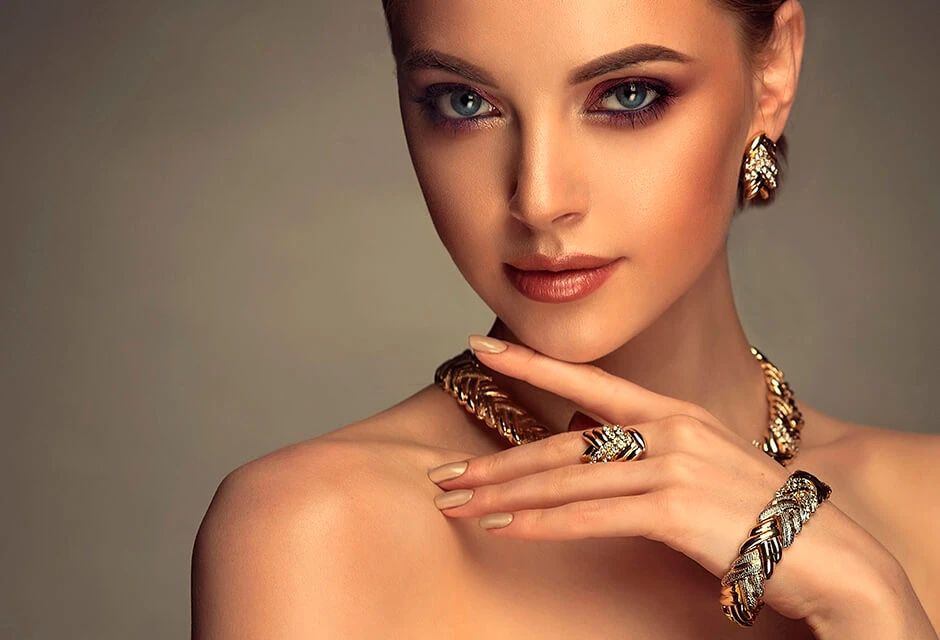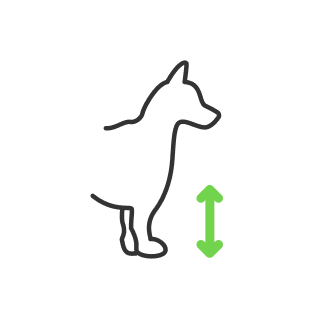Softbox in photography

- What are softboxes used for?
- Softbox shapes
- Deployment features
- What size of the softbox is better?
- Shape and size dependencies
- Materials to consider
- The stand
- Additional features
- Source of lighting softbox
- What is softbox lighting?
- Softbox main feature
- Softbox photography lighting kit to choose
- Impact softbox
- Skytex kit
- Neewer RGB
- Conclusion
Speaking of professional photography and studio work, many different things can come to our minds. And one of those things is the lighting set the right way. A lot depends on it, right up to the quality of the picture. Bad light can ruin the image of even the most expensive model, hence the photography job is all about details. And light exposure is no exception. Softboxes are the most popular type of modifier for portrait photographers. If you are considering using a softbox and you never used one before but considering getting one, we bring some thoughts on what you should look for and what you should try to avoid when considering a softbox. Today we will discuss what is softbox in photography and such details as its contents, usage, and how to expose the light in order to achieve the best results in your studio!
What are softboxes used for?

Every photographer and videographer knows that the main condition for creating a good shot is light. And no matter if this is a model photoshoot or product photography, in most cases, you need soft diffused light without harsh shadows and glare, so the most popular light source attachment is a softbox. In photographic terms, hard light is a light source that creates very intense shadows with stark transitions between light and dark. Soft light on the other hand is characterized by a smooth transition between the light and shadows and often is seen as a wrap-around light. The softbox as a unit is a closed construction that consists of external and internal diffusers and a reflector inside. The shape of the reflector is made to provide uniform illumination of the diffusers. The shape is one of many other features that softbox contains. Let us discuss each of them in particular.
Softbox shapes

There are several varieties of softbox shapes.
Quadrangular - they include rectangular softboxes and quad boxes or square diffusers, they are most often used for portraits. Also, quadrangular softboxes include strip boxes - elongated narrow nozzles in the form of a long rectangle.
There are also round softboxes, they differ in the number of faces. The most popular of them is an Octagonal box which has 8 faces respectively, but in general, the number of faces can be anything up to the formation of a circle around the perimeter.
Deployment features
There are also quick-fold softboxes that are easy to assemble and just as easy to disassemble. When folded, they are umbrella-shaped, which is very convenient for carrying.
What size of the softbox is better?

There is a natural question, what size and shape to choose a softbox? The size matters when it comes to choosing a softbox, depending on what it is that you are trying to accomplish in your photoshoot. Most people would say the bigger the better, but it all comes down to what your goal is. For instance, small square softboxes have common usage in portrait photography, whereas other shapes and sizes could be used for fashion and full-body photography.
Shape and size dependencies
On top of that, the shape of the screens characterizes the shape of the glare that appears in the models' eyes or on the glossy surfaces. In turn, the size of the scattering surface determines the degree of softness of the light. Remember, the bigger the softbox, the softer the light. In addition to size and shape, you should pay attention to the ratio of soft box parameters to the size of the object.
If you want to light a person in full body, you should not use a 40x40 Quadrobox or an Octobox of 50 centimeters in diameter. For this purpose, the ideal choice is a strip box that will fully illuminate the person. Because of the narrow and elongated shape of the diffuser, the shadows will be harder compared to a larger square softbox. Also, thanks to the strip box you can get the so-called cat's eye effect. With two strip boxes standing a short distance away from each other and facing the model in full face, you can get a cat's eye flare.

An important softbox parameter is the uniformity of the screen glare. The deeper the softbox is the more evenly illuminated the screen. However, some loss of illumination around the edges is noticeable even in the softboxes from reputable manufacturers, and the additional diffusers inside the softbox do not always provide a perfect result. By the way, many photographers consider this feature not as a disadvantage, but an advantage, allowing them to get soft transitions of light. So the choice of a softbox directly depends on your objectives.
Here is an example below of how Softbox looks from the inside without the screen.

Your softbox should not be too big. If you are going to be working in a normal-sized room where the ceiling is going up to like eight or nine feet you will have a problem positioning this huge piece of equipment, not even talking about angling it the right way afterward. However, as a general rule if the light is 3 feet wide then you want that light no more than 3 feet away from your subject’s face. For instance, a 36-inch softbox will give you excellent soft light coverage within 3 feet distance which is good for head and shoulders shots. If you are using a softbox with rectangular dimensions, you can get creative by using more light coverage in one direction and more light drop-off in another.
Materials to consider
In addition, pay attention to the materials of the diffuser fabric. The quality of the fabric is easy to check through the light. A bad fabric will give a pronounced light cross. This glow will be very noticeable on all glossy surfaces during shooting. In turn on a good fabric, this effect is less noticeable.
The stand
When choosing a large-size softbox, pay attention to the special metal bracket which allows you to move the device along the body for better balance. Devices with plastic brackets might simply not be able to withstand the weight of your diffuser.
Additional features

Some softbox models come with a special honeycomb grid. They help cut off unnecessary light and make the light more directional. This helps a lot if we need to narrow the area of effect and disable the background from showing up in the frame. It basically limits what your softbox is going to see.
Source of lighting softbox

If you are going to use halogen sources, all elements of the softbox must be heat-resistant. Some of these softboxes can be mounted on a 1-kilowatt halogen illuminator. Because of the strong heat, it is simply impossible to touch them in the process of operation, but the softbox itself can easily withstand such high temperatures. Also, these softboxes have special ventilation pockets. So before you buy a softbox, decide what type of light source you are going to work with.
What is softbox lighting?

As we found out earlier, different shapes and types of softboxes have different effects on the photo. But why are softboxes so popular among photographers? Well, the thing is that they are very flexible in their use. A professional photographer understands that it is not enough to just have a good softbox photography lighting kit, you also need to know how to use it. By setting different illumination angles of the model, we can achieve different effects. For example, by rotating the softbox at a certain angle we can play with shadows to create a dramatic atmospheric effect. A softbox angled 90 degrees in relation to your model will put half of the model’s face in shadow, making the shot moody. Adjusting the angle we can achieve a variety of shadow effects and each shot will look different.

90-degree angle also works If you are interested in black background photography, but it would be also good to use the honeycomb grid filter on top of your softbox. That way you will reduce the background illumination, and your model will get a fair amount of soft light at the same time. The small-sized softbox also has this feature to influence the background. The larger softbox is the less pronounces your background is going to be and the softer the light. On the other hand, a smaller softbox is used for shadow photography where you want to emphasize shadows as a part of your image as the light is more narrow and focused.
The rule of thumb while using a softbox is that its height should be on the eye level of your model and be reflected in the eyes. If there is no reflection then your softbox is way too high above your model.
Softbox main feature
As we get to know softox is softening the light. If we use reflectors the light is straight and you can see either shadow or light in the end. Softboxes grade colors in a variety of ranges. It is possible due to construction specifics. The light source inside the softbox reflects gradually. That way we can see the softbox has less light produced from its sides. If we angle the softbox in a particular way where the light is going down to the side we can set a nice-looking gradient over our model that is going to look better than harsh direct light. Our brain functions that way it does not like to see the high level of details and contrasts it appears unnatural to our eye compared to soften the light with gradients and soft transitions between light and shadow.

Thus if we want to achieve interesting lighting conditions and artistic effect, use Softbox at an acute angle pretty much facing away from the model. This way we get a wrap-around light and also make the background disappear if we shoot in a studio.
Softbox photography lighting kit to choose
As we get to choose the kit, we have selected the top 3 brands that will cover any needs.
Impact softbox
The impact lux bank softboxes are a series of light modifiers intended for flash strobe units that soften the light. The Luxbank is ideal for portrait photographers and product shooters wanting a soft light source. This product is recommended for stable studios where you are going to work constantly due to exploitation difficulties. Customers claim that assembling and disassembling the unit may take some time and you want to keep it for the duration. However, the variety of options to choose from and the product’s quality will keep you satisfied using it. So, if you are looking for a good brand to set up your studio this would be a good start.
Skytex kit
If we shortly compare Skytex with the Impact kit, we quickly notice that it is much easier to assemble right off the box. The kit is good for traveling as you can manage it with ease. The kit comes in a bag that holds all the accessories, which is also convenient when traveling. Supplied remote control allows you to adjust the light strength.
Neewer RGB
This kit was manufactured in 2022 and contains RGB lights with 2 power supply options. Pretty easy to assemble and use for studios in portrait photography. Highly reflective material allows you to pronounce 10 different lighting effects with precision. A 2.4 G remote is also included allowing you to control up to 16 channels.
Conclusion

We hope this article leads you to understand what does a softbox do in photography. It is a flexible tool that makes the best service in lighting your shots with soft and adjustable light. With a bit of theory, you will know how to use it to your benefit no matter if you are a beginner or advanced photographer that is going to run his own studio business.
We recommend reading the following article about DIY lightboxes for photos if you are interested not just in a model photoshoot but also want to create some cheap lightboxes for small objects and achieve all the benefits of using a normal-size softbox for less than 10 dollars spent. Or maybe you want to set up a small studio at home to try out, then follow this article.
He started his career as a professional photo designer and retoucher. Professional commercial photographer with 20 years of experience. He is a leading advertising photographer and has worked as a food photographer with Michelin-starred chefs. His work with models can be seen on the calendars of many leading companies in Ukraine. He was the owner of the photo studio and photo school "Happy Duck".

with RetouchMe














